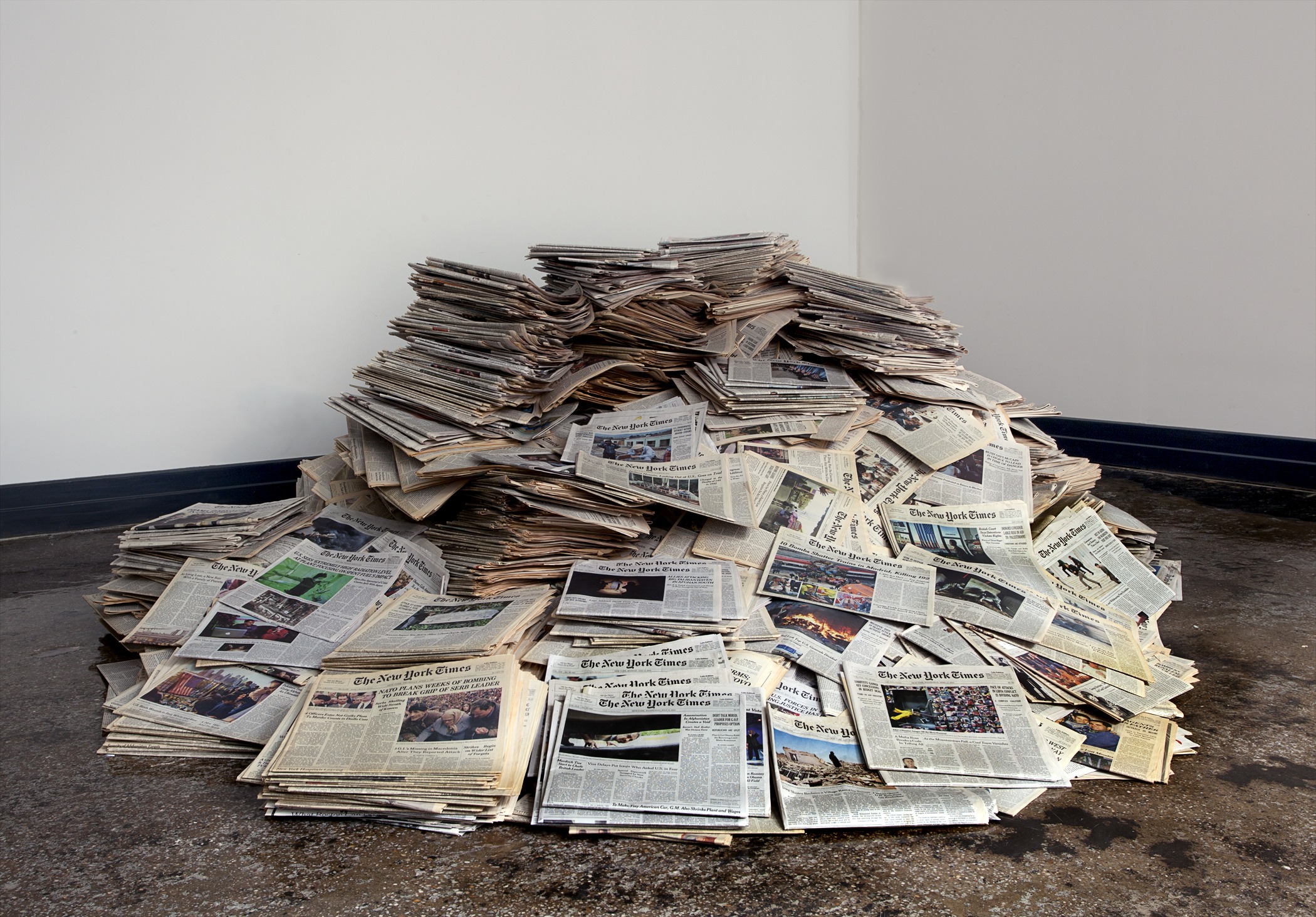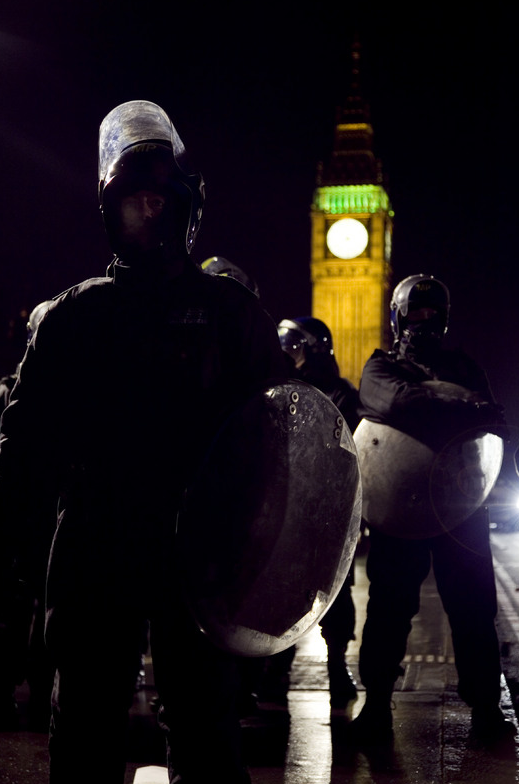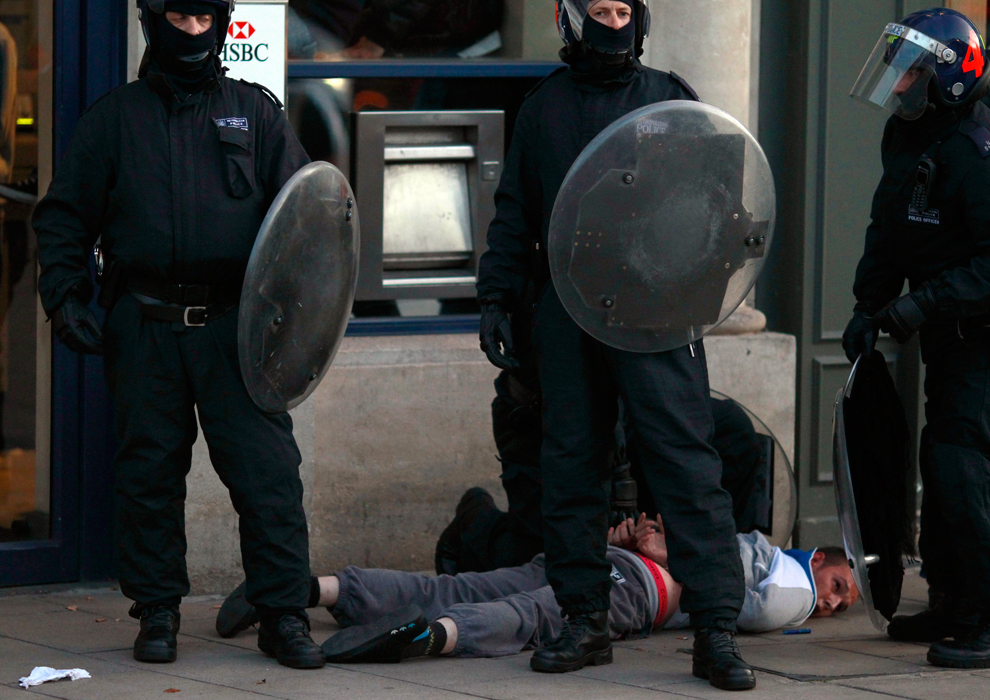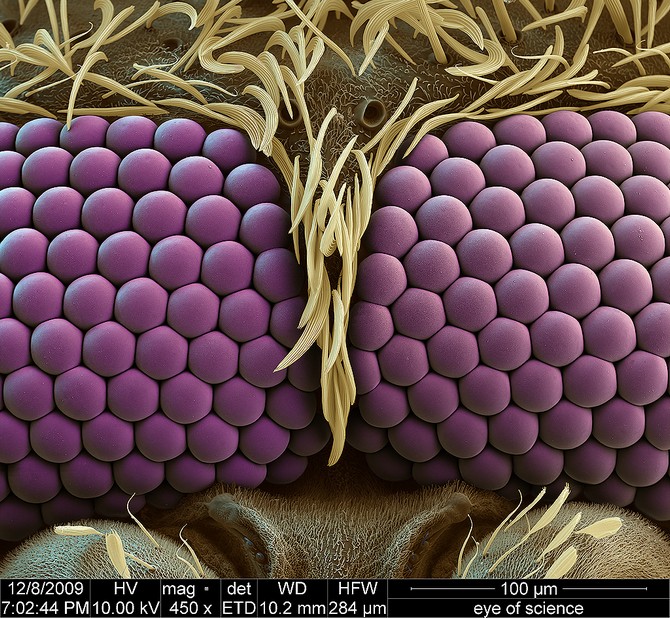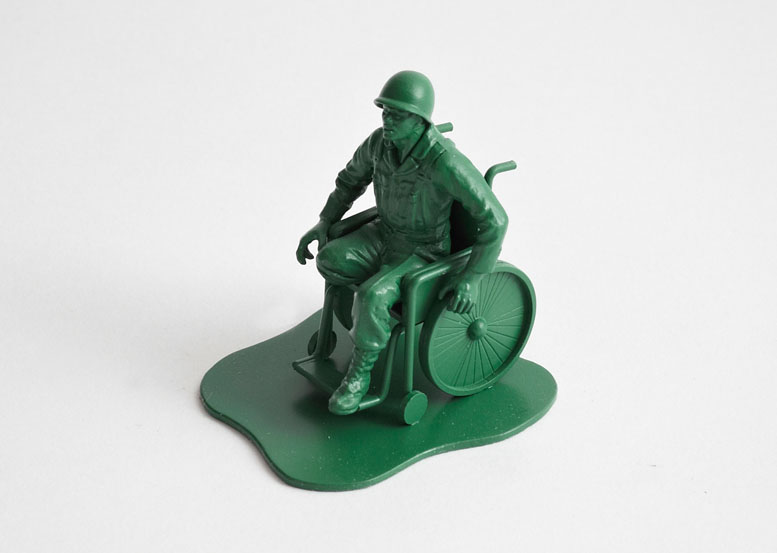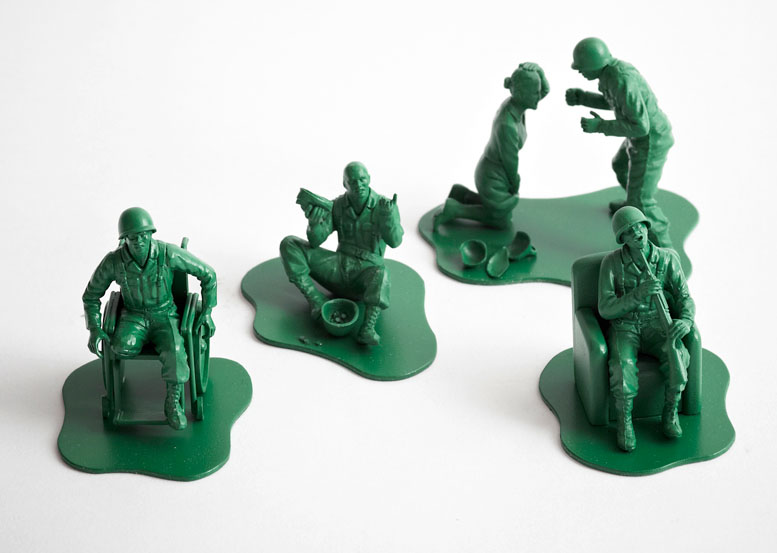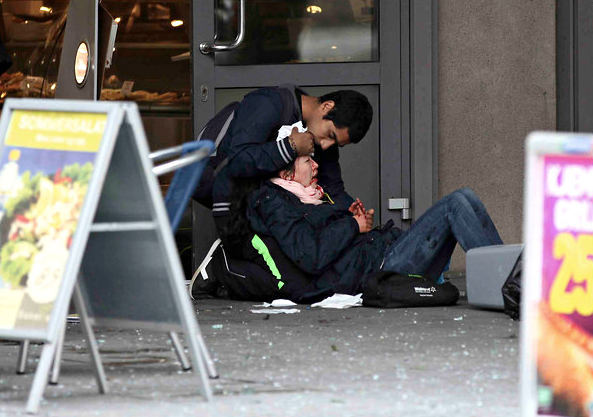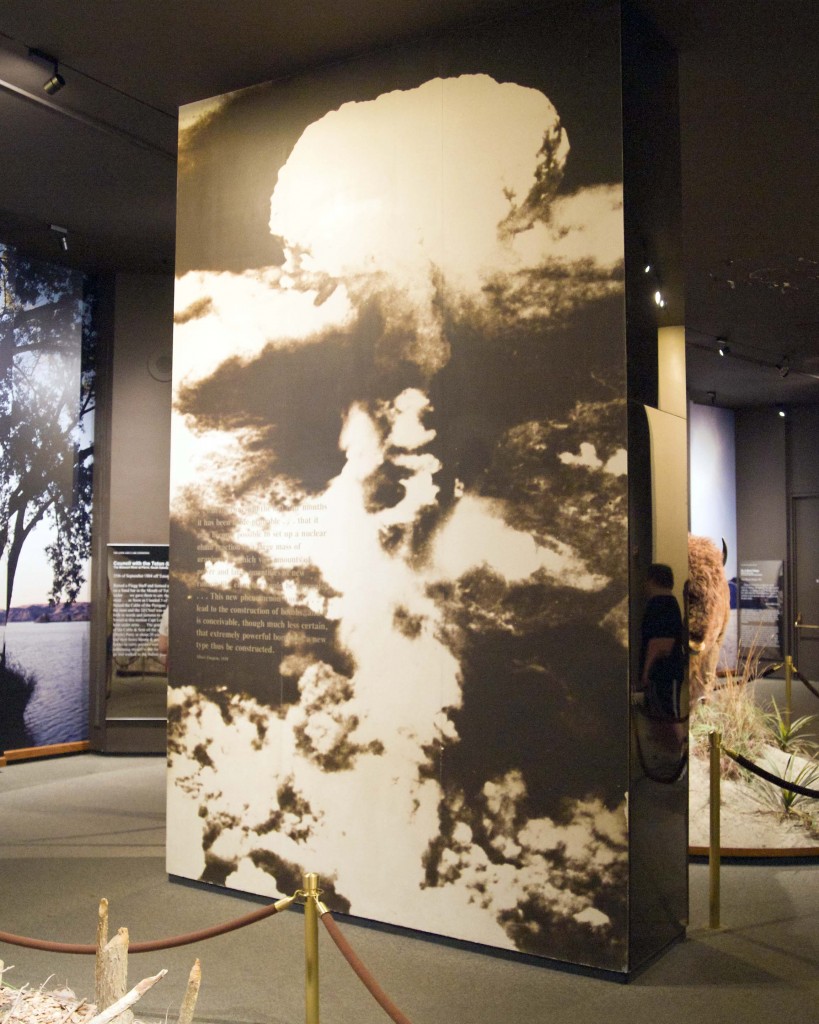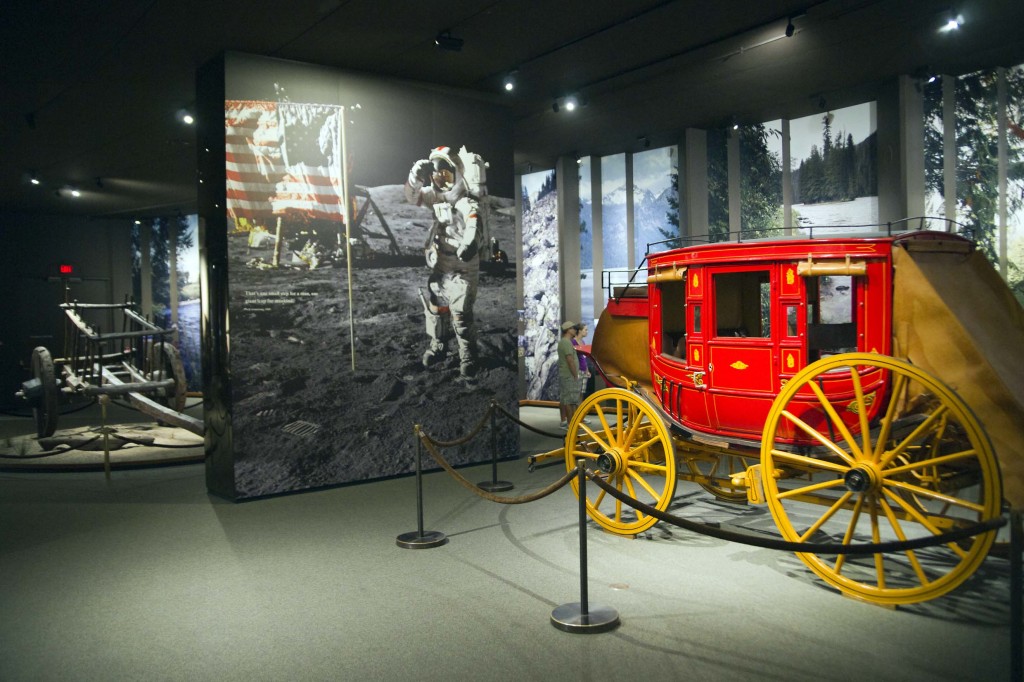Guest Post by Bryan Walsh
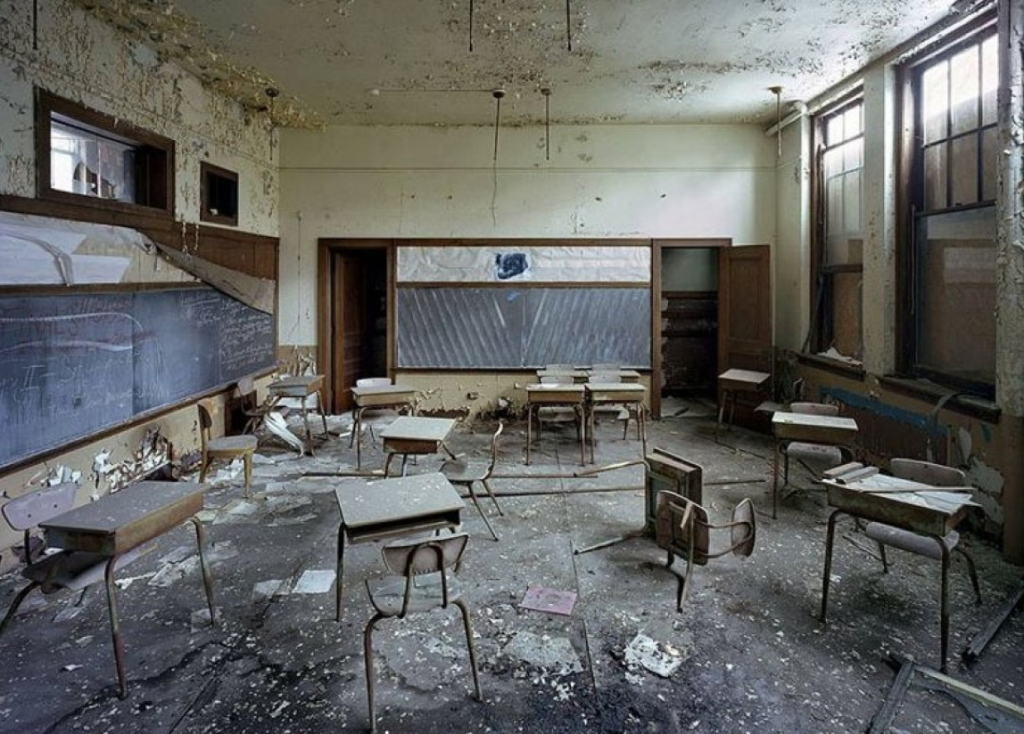
While ruin gnaws at the promises of American democracy, photography serves as an invaluable technology for visualizing our increasing vulnerability to social and political abandonment—and just maybe for defending against it. Consider the above image of a classroom in Detroit’s St. Margaret Mary School: empty desks are scattered throughout, littered course papers amass on a burnt and charred floor, lectures and exam dates are faintly scribbled on a chalkboard, closets are stripped of their possessions, windows are broken and boarded-up, lighting fixtures dangle from a moist and moldy ceiling, and what appears to be a broken ruler lies on top of a desk in the bottom right of the frame. Despite being reduced to rubble and debris, the objects are nonetheless glaringly clear. The wide-angle offers a perspective to the viewer that encompasses the totality of the classroom while the deep focus enhances the details and intricacies of the landscape and its objects. The composition of the photograph effectively brings the space to life, offering all its complexity to the careful contemplation of the viewer.
But what does this photograph want us to contemplate? Note the spatial layout of the remnants of the school: the chalkboards, windows, papers, closets, and most of the desks are relegated to the periphery of the room. Complimented by the circular formation of the desks and the directionality of the lines on the windowsills and chalkboards, the fallout of the classroom orbits around an invisible but nonetheless noticeable center. Indeed, there is something missing here and the photograph renders it a ghostly presence that glares back eerily at the viewer.
Put bluntly, St. Margaret Mary School is haunted by the everyday activities that once animated it. Even if you didn’t live in northwest Detroit, or attend Sunday services at the St. Margaret Mary parish, or endure lessons taught by an Order of Sisters, the landscape and its remnants are identifiable for most Americans: I once sat at those awkward desks and wrote childish nonsense on those papers; I gazed in reverie through those windows; my teacher scribbled on those chalkboards and demanded my attention with that ruler. In short, this photograph displays a powerful paradox: what is so overwhelmingly visible within these spaces is also what is so painfully absent–the everyday activities that sustain and are sustained by a flourishing and hopeful city.
Despite its collapse, this photograph of an abandoned classroom in the St. Margaret Mary School calls forth the memories of a more promising past. Such is the topic of concern for Yves Marchand and Romain Meffre’s photographic project “The Ruins of Detroit.” Depicting Detroit’s dilapidated metro-stations, schools, theaters, banks, industrial facilities and other civic spaces, Marchand and Meffre’s photographs invite a range of interpretations that put past and present in tension with one another: they could evidence the extent of Detroit’s civic and infrastructural abandon, or that of a weathered and beaten civilization, or for that matter they could even foreshadow the impending doom of American Empire. Invoked by the images, such memories are nostalgic and mournful, at least insofar as they eulogize a flourishing cityscape buzzing with prosperity and modern mass production.
Detroit now stands (leans?) as a veritable wreckage of infrastructural and social disaster: not only have a quarter of its population fled the city in a desperate search for employment, but city officials and enforcement agencies have displaced families from their homes and boarded-up entire neighborhoods, leaving it in nothing less than a thorough state of collapse. Just last spring, roughly 5,500 teachers and 250 administrators received pink slips, while seven public schools have been shutdown, and 45 others have been packaged to charter school developers, 18 of which will be closed if they don’t find a buyer. This photograph of a single classroom in the St. Margaret Mary School does not tell this part of the story, but it does provide resources with which communities can make sense of—and intervene in—the perpetuation of personal injury, social inequity, and political abandonment. The image, then, does not “exploit a city’s misery” through a “decontextualized aesthetics of ruin”; rather, it tangles the past with the urgency of the present, reminding viewers to acknowledge both the vulnerability of the people of Detroit as well as the imperative to do something about it.
Photo Credit: Yves Marchand and Romain Meffre, The Ruins of Detroit
Bryan Walsh is a graduate student in the program in Rhetoric and Public Culture, Department of Communication and Culture, Indiana University. He can be contacted at btwalsh@umail.iu.edu.
3 Comments

